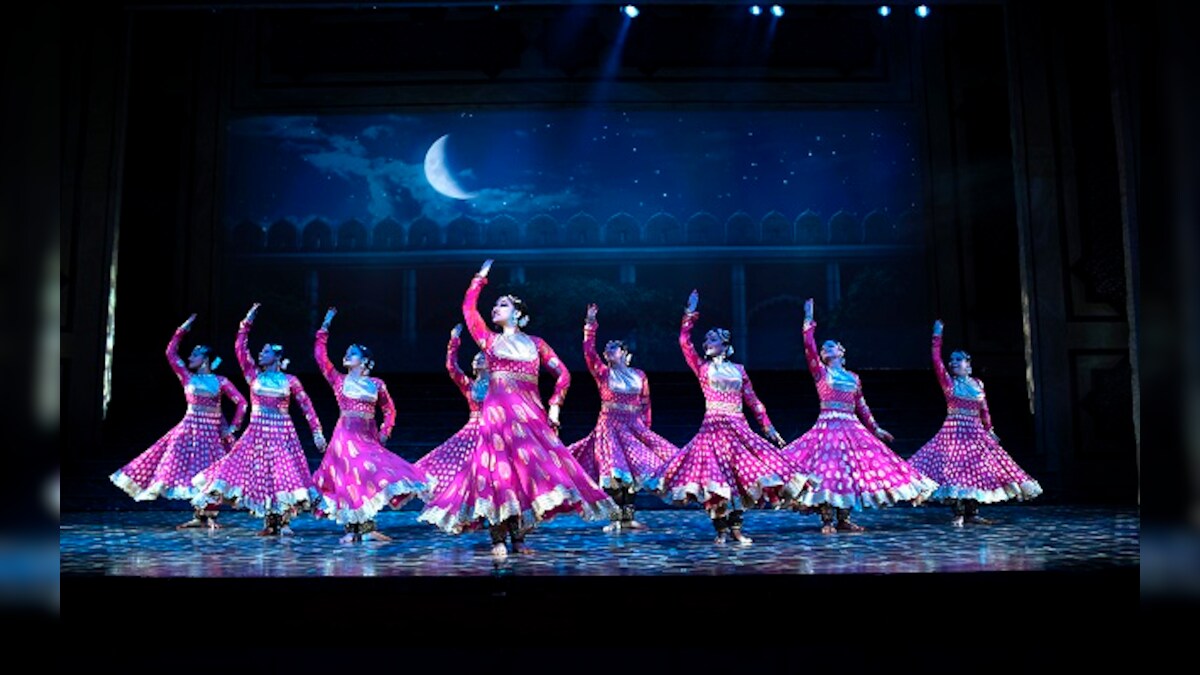In an EXCLUSIVE interview with Firstpost, designer Manish Malhotra talks about the research that went behind creating the costumes for Mughal-e-Azam, the challenges he faced and more.
Mughal-e-Azam is a tale of eternal love that threatened an empire, told in a musical style. With intricate direction, spectacular choreography, magnificent costumes, artistic production design, and innovative use of technology,
Mughal-e-Azam
revisits old themes with a modern touch. The original classic film Mughal-e-Azam directed by K. Asif was one of the most ambitious projects in the history of Indian cinema, and certainly paid off for all the hurdles that came in its production, for the movie was so successful that to this day, people associate the term Mughal-e-Azam with the film more than they do with Emperor Akbar himself.
Based on the classic film, the Broadway-style musical does absolute justice to the original. Award winning designer and couturier,
Manish Malhotra
talks to Firstpost’s Lachmi Deb Roy on designing the costumes for Mughal-e-Azam with painstakingly sourced vintage fabric.
Edited excerpts from the interview:
What is the research that went into creating the costumes?
Mughal-e-Azam is very close to my heart. For me, it was very exciting because it is the first time I was doing a period drama and the first time I was doing a theatrical play that had 600 costumes. We obviously did our recce around plays and theatre costumes as I had to modify the structure of designs from my normal runway fare where the linings used in the outfits for the artists were much lighter. The entire thing was on Velcro. Velcro had to be dyed to the colour of the outfits because in a second you have to change.
Was it hard to source the fabrics and kaarigars to match the opulence of the film’s costume design?
The designing process of 600 costumes was surreal and the outcome was histrionic for sure. There were layers of vintage fabric, whether it be silk, Kota, Zardosi embroidery, brocades, Bandini, or velvet, everything is pure and rich in the display. There have been days and nights of work and I went all out to use pure fabrics and intricate embroideries to make the process and the journey worthwhile.
How challenging was the process of creating almost 600 costumes?
The obvious challenge was that outfits had to be striking as well as stage-appropriate. Someone is wearing a kurta inside then there is Sherwani and then something else inside. I had put in all the hard work in designing the costumes, which had to be ready for the primary and secondary cast at the same moment. Velcro seemed the most suitable option because it facilitates quick change.
Did the film influence the costume design to some extent or did you want to chart your own path and find inspiration elsewhere?
It’s certain we keep going back for inspiration, isn’t it? The film Mughal-e-Azam was set in the backdrop of the Mughal Era, what today is known as the period of the opulent and royal lifestyle. From the courtly pleasures, cutlery, royal baths, decor to the ways of dressing, everything had its own sense of greatness attached to it. I looked at the drawings and paintings of that period. My inspiration was majorly drawn from the grandiosity of the Mughal period.
What was the brief that Feroz Abbas Khan, the director, gave you on creation of the costumes?
Working with Feroz Abbas Khan who is a fabulous, acclaimed play director and Shapoorji made it all a tremendously satisfying experience. Feroz’s collaborative triumph to turn a monumental film Mughal-e-Azam into a Broadway-style musical is commendable. The designs had to speak of grandeur, glory and the extravagance of the Mughal period. It is a period piece, but it has modern sensibilities. The designs carry forward the legacy of original characters however I tried to strive for the signature sheen to illuminate its grandiosity.
How different was it to design costumes for the stage considering you have styled characters for film for so long?
Designing for celebrities, films, and fashion shows is entirely different from designing costumes for a periodical theatre play. The obvious challenge was that outfits had to be striking as well as stage-appropriate and facilitate quick change where Velcro plays a significant role in costumes to fulfil the need.
How much of the Indian fashion market is bridal wear?
India has a massive youthful population, we have around 800 brides walking in our store every month, social media aspirational validation is riding high, the bridal market is so vast that a parallel ecosystem of bridal fashion either ready to order or customised option has developed. Every designer has a separate bridal line to cater to the ever changing needs of brides today. The numbers across the country speak for themselves.
Read all the
Latest News
,
Trending News
,
Cricket News
,
Bollywood News
,
India News
and
Entertainment News
here. Follow us on
Facebook
,
Twitter
and
Instagram
.

